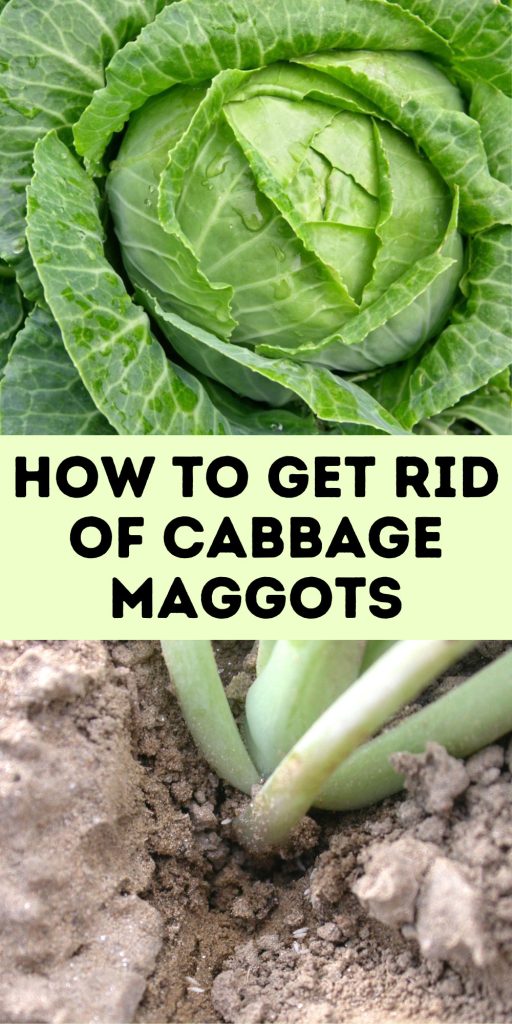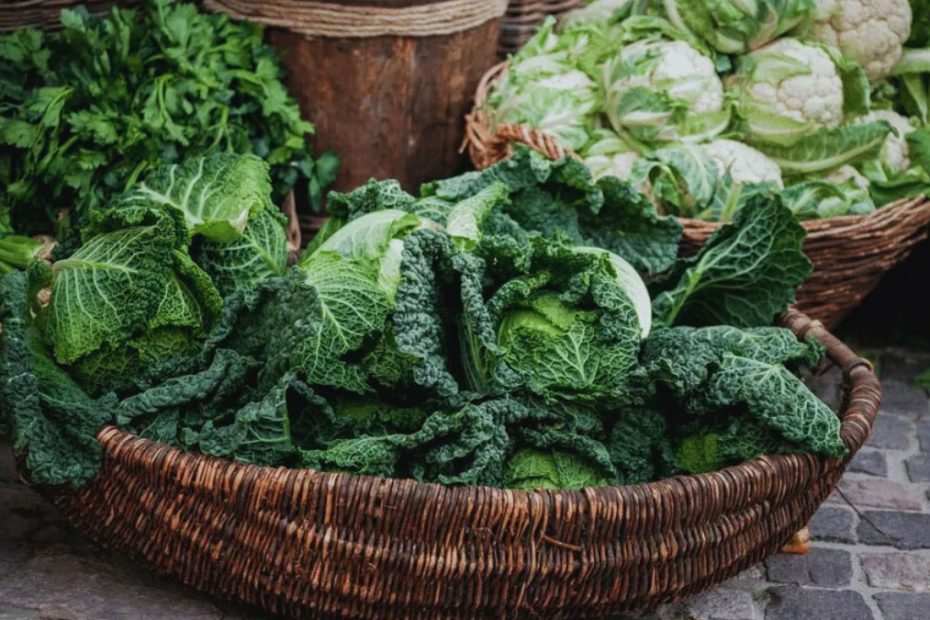Cabbage maggots can wreak havoc on your garden, turning your healthy plants into a wilting mess. These tiny pests burrow into the roots of cabbage, broccoli, and other cruciferous vegetables, causing significant damage that can ruin your harvest. If you’ve noticed yellowing leaves and stunted growth, it’s time to take action.
Getting rid of cabbage maggots might seem daunting, but with the right strategies, you can protect your plants and ensure a bountiful yield. From natural remedies to preventive measures, we’ll walk you through effective methods to combat these pesky invaders and keep your garden thriving.
Key Takeaways
- Early Identification is Crucial: Recognize signs such as wilting leaves, stunted growth, root damage, and the presence of larvae to take timely actions against cabbage maggots.
- Life Cycle Awareness: Understand the life cycle stages of cabbage maggots—from eggs to adult flies—to effectively time interventions.
- Prevention Methods: Implement crop rotation, use row covers, and strategically time your planting to prevent maggot infestations.
- Natural Remedies: Employ beneficial insects, diatomaceous earth, and neem oil as eco-friendly methods to manage cabbage maggots.
- Chemical Solutions: Use insecticidal soaps and synthetic insecticides for severe infestations, following safety guidelines to minimize environmental impact.
- Long-term Management: Focus on soil health improvement and regular monitoring to sustain control over cabbage maggots and prevent future issues.

Understanding Cabbage Maggots
Cabbage maggots pose a significant threat to gardens by targeting cruciferous vegetables. Recognizing their life cycle and the damage they cause helps in combating these pests.
Life Cycle of Cabbage Maggots
The life cycle of cabbage maggots starts in spring, with adult flies laying eggs at the base of plants. The eggs hatch within 3 to 10 days, releasing larvae.
- Egg Stage: Eggs measure about 1 mm and are white, laid in clusters at plant bases.
- Larval Stage: Larvae burrow into the soil to feed on roots. This stage lasts 3 to 4 weeks.
- Pupal Stage: Pupae remain dormant in the soil during winter, resuming activity in spring.
- Adult Stage: Adult flies resemble small houseflies, approximately 6 mm long, and emerge in spring to continue the cycle.
Understanding these stages is vital for timely intervention.
Identifying Cabbage Maggot Damage
Identifying cabbage maggot damage early minimizes crop loss. Inspect plants for these indicators:
- Wilting and Yellowing Leaves: Check for these symptoms in young plants.
- Stunted Growth: Affected plants often show limited growth.
- Root Damage: On pulling, roots may appear brown or rotten.
- Presence of Larvae: Look for slender, white larvae near plant roots.
By identifying these signs, you can take prompt action to protect your garden from further damage.
Prevention Methods
Effective prevention methods keep cabbage maggots from infesting your garden, safeguarding your plants.
Crop Rotation
Changing the planting location helps prevent maggot infestations.
Taxonomy: Cruciferous vegetables (cabbage, broccoli, cauliflower).
Rotation Timeline: Every 3-4 years for best results.
Reason: Disrupts the life cycle of cabbage maggots.
Use of Row Covers
Row covers act as a physical barrier between pests and plants.
Material: Lightweight, permeable fabrics such as polyester or polypropylene.
Installation:
- Place covers immediately after planting.
- Ensure they are secured to the ground using soil or stakes.
Effectiveness: Prevents adult flies from laying eggs at the base of plants.
Timing of Planting
Strategically timing your planting can lessen the risk of infestation.
Optimal Period: Planting before or after peak egg-laying periods (spring and early summer).
Observation: Monitor local climate and pest activity patterns.
Companion Planting: Early season planting of non-host plants can divert flies away from main crops.
Implementing these prevention methods protects your garden from cabbage maggots, ensuring healthier crops and better yields.
Natural Remedies
You can effectively combat cabbage maggots using natural remedies, which are eco-friendly and safe for your garden.
Beneficial Insects
Beneficial insects, like predatory wasps and nematodes, can help control cabbage maggot populations.
- Predatory Wasps: These wasps lay their eggs on the maggots, and the larvae consume the maggots from the inside, reducing their numbers significantly.
- Nematodes: These microscopic worms penetrate cabbage maggot larvae, causing them to die within days. Apply nematodes in the evening when the soil is moist.
Diatomaceous Earth
Diatomaceous earth, a natural powder made from fossilized algae, can deter and kill cabbage maggots.
- Application: Sprinkle the powder around the base of your plants. The sharp particles will cut the maggots and dehydrate them, leading to their death.
- Frequency: Reapply after rain or watering for continued effectiveness.
Neem Oil
Neem oil, extracted from the seeds of the neem tree, acts as a natural insecticide and repellent.
- Preparation: Mix 2 tablespoons of neem oil with 1 gallon of water and add a few drops of dish soap to help the mixture adhere to the plants.
- Application: Spray the solution onto the base of infested plants and the surrounding soil. Repeat every 7-14 days, especially after rain, to maintain effectiveness.
Using these natural remedies, you can effectively manage cabbage maggots and protect your garden’s health. Implementing them regularly ensures better crop yields and a sustainable gardening practice.
Chemical Solutions
To manage cabbage maggots effectively, chemical solutions provide another line of defense when natural remedies and preventive measures fall short. These solutions can help control the maggot population, minimizing damage to your crops.
Insecticidal Soaps
Insecticidal soaps are a biodegradable and relatively safe option for managing cabbage maggots.
Definition:
- Insecticidal Soap: A soap-based pesticide derived from plant oils; it is used to kill soft-bodied insects by breaking down their cell membranes.
To use insecticidal soaps:
- Identify Infested Areas: Focus on the root zone where maggots feed.
- Mix According to Instructions: Follow the manufacturer’s guidelines for dilution.
- Apply Directly: Spray generously on the affected soil around the plant base.
- Monitor Plants: Reapply weekly or as recommended, especially after rainfall.
Insecticidal soaps are effective because they smother the larvae, preventing further root damage.
Synthetic Insecticides
Synthetic insecticides offer more potent solutions when infestations are severe, though they often come with higher environmental impact.
Definition:
- Synthetic Insecticide: Man-made chemicals formulated to kill or repel insects; examples include chlorpyrifos and permethrin.
When using synthetic insecticides:
- Read Labels Carefully: Make sure the insecticide is labeled for use against cabbage maggots.
- Wear Protective Gear: Gloves, masks, and protective clothing safeguard against chemical exposure.
- Follow Application Rates: Over-application can harm beneficial insects and the environment.
- Apply at Proper Times: Early morning or late evening applications reduce risks to pollinators.
- Choose the Right Product: Look for insecticides specifically targeting root maggots.
- Prepare the Garden: Remove debris and mulch to expose the soil.
- Apply According to Guidelines: Uniform application ensures the best coverage and effectiveness.
- Reapplication: Follow-up treatments may be necessary, especially in heavy infestations.
Synthetic insecticides can rapidly reduce maggot populations, but should be used judiciously to maintain a balance in the garden ecosystem.
Long-term Management Strategies
For effective long-term management of cabbage maggots, you need to carry out comprehensive strategies that focus on soil health and regular monitoring. These practices ensure sustainable control and prevent future infestations.
Soil Health Improvement
Healthy soil is less prone to pest infestations and promotes robust plant growth. To improve soil health, follow these key practices:
- Organic Matter: Regularly add compost or well-rotted manure to enhance soil structure and nutrient content.
- pH Balance: Maintain a neutral soil pH (6.0-7.0) to support microbial activity and overall plant health. Use soil testing kits to track pH levels and amend as needed.
- Crop Rotation: Rotate cruciferous vegetables with non-host plants every 3-4 years to disrupt the cabbage maggot life cycle. This decreases the likelihood of recurring infestations.
- Cover Crops: Grow cover crops like clover or rye during off-seasons to improve soil quality, reduce erosion, and suppress pest populations.
Regular Monitoring
Consistent monitoring helps detect early signs of infestation, enabling timely intervention. Carry out these monitoring strategies:
- Visual Inspections: Examine plants weekly for signs of maggot activity, such as wilting, yellowing leaves, or root damage.
- Sticky Traps: Place yellow or blue sticky traps around your garden to monitor adult fly populations. Check and replace traps regularly to maintain efficacy.
- Soil Sampling: Take soil samples near plant bases to check for maggot larvae presence. If larvae are found, take appropriate control measures immediately.
- Record Keeping: Maintain detailed records of pest activity, control methods used, and their effectiveness. This helps in planning future management strategies.
By focusing on soil health improvement and regular monitoring, you can achieve sustainable long-term management of cabbage maggots in your garden.
Conclusion
Dealing with cabbage maggots can be challenging, but with the right strategies, you can protect your garden and enjoy healthy crops. By understanding their life cycle and identifying early signs of infestation, you can take timely action to minimize damage.
Implementing preventive measures like crop rotation, row covers, and companion planting can significantly reduce the risk of infestation. Natural remedies and beneficial insects offer eco-friendly solutions, while chemical options provide additional control when necessary.
Maintaining soil health and regular monitoring are crucial for long-term management. With these comprehensive approaches, you’ll be well-equipped to combat cabbage maggots and ensure a successful harvest.
Frequently Asked Questions
What are the signs of a cabbage maggot infestation?
The signs of a cabbage maggot infestation include yellowing leaves, stunted growth, wilting, root damage, and the presence of larvae. Spot these early to minimize crop loss.
How do cabbage maggots damage plants?
Cabbage maggots damage plants by feeding on the roots, which leads to yellowing leaves, wilting, stunted growth, and even plant death if not controlled.
When do cabbage maggots typically appear?
Cabbage maggots typically appear in the spring when adult flies lay eggs at the base of cruciferous plants like cabbage and broccoli.
What are effective natural remedies for cabbage maggots?
Effective natural remedies include using beneficial insects like predatory wasps and nematodes, as well as applying diatomaceous earth and neem oil to manage infestations sustainably.
How can crop rotation help in preventing cabbage maggots?
Crop rotation disrupts the life cycle of cabbage maggots by changing planting locations every 3-4 years, making it harder for the pests to establish themselves.
What role do row covers play in managing cabbage maggots?
Row covers act as a physical barrier, preventing adult flies from laying eggs on plants, which helps in minimizing cabbage maggot infestations.
Are there any chemical solutions for controlling cabbage maggots?
Yes, insecticidal soaps and synthetic insecticides can be used. Insecticidal soaps smother larvae, while synthetic insecticides are effective for severe infestations but should be used with caution.
How important is timing when planting to avoid cabbage maggots?
Timing is crucial. Planting before or after peak egg-laying periods helps reduce the risk of cabbage maggot infestations.
How can gardeners monitor for cabbage maggot infestations?
Regular monitoring involves visual inspections, using sticky traps, soil sampling, and keeping detailed records to detect early signs of infestations and enable timely interventions.
What are long-term management strategies for cabbage maggots?
Long-term strategies include improving soil health by adding organic matter, maintaining a neutral pH, rotating crops, and growing cover crops, along with regular monitoring practices.
Can companion planting help deter cabbage maggots?
Yes, companion planting with non-host plants can help divert flies away from cruciferous vegetables, reducing the risk of cabbage maggot infestations.
